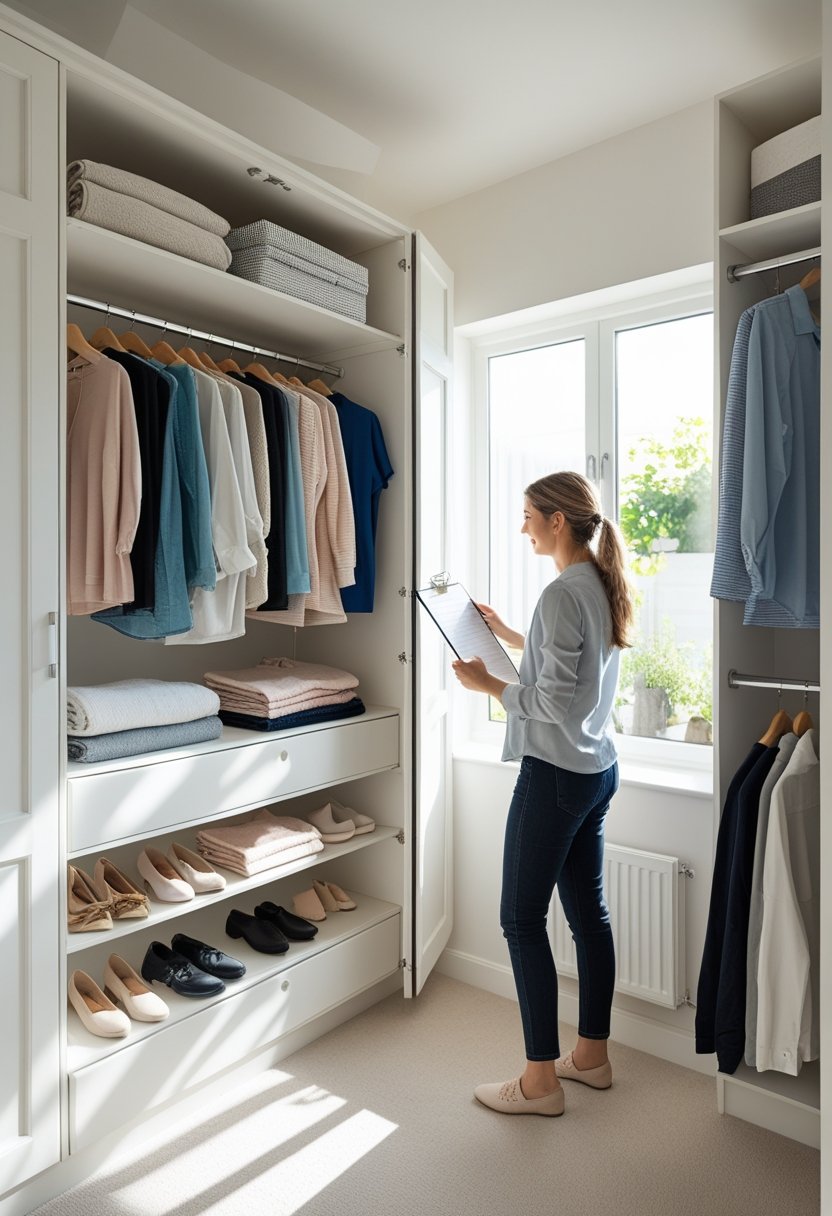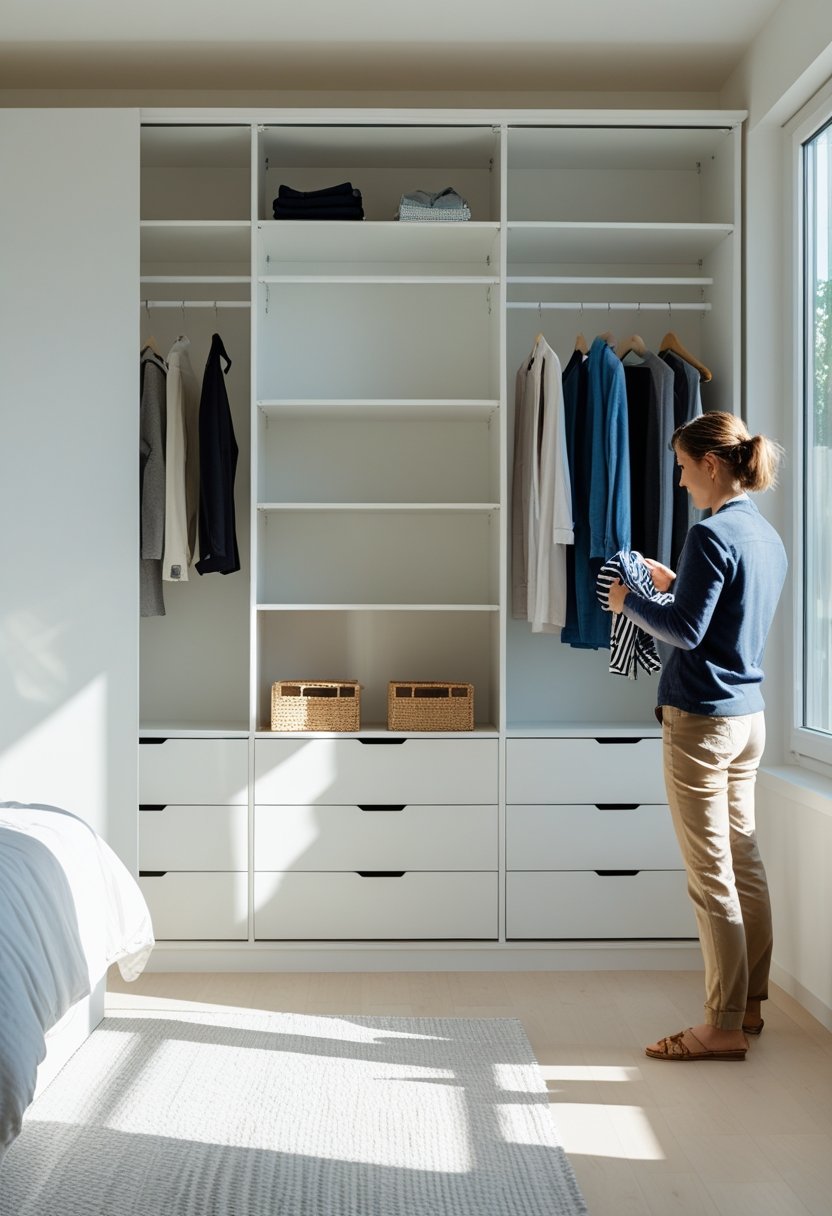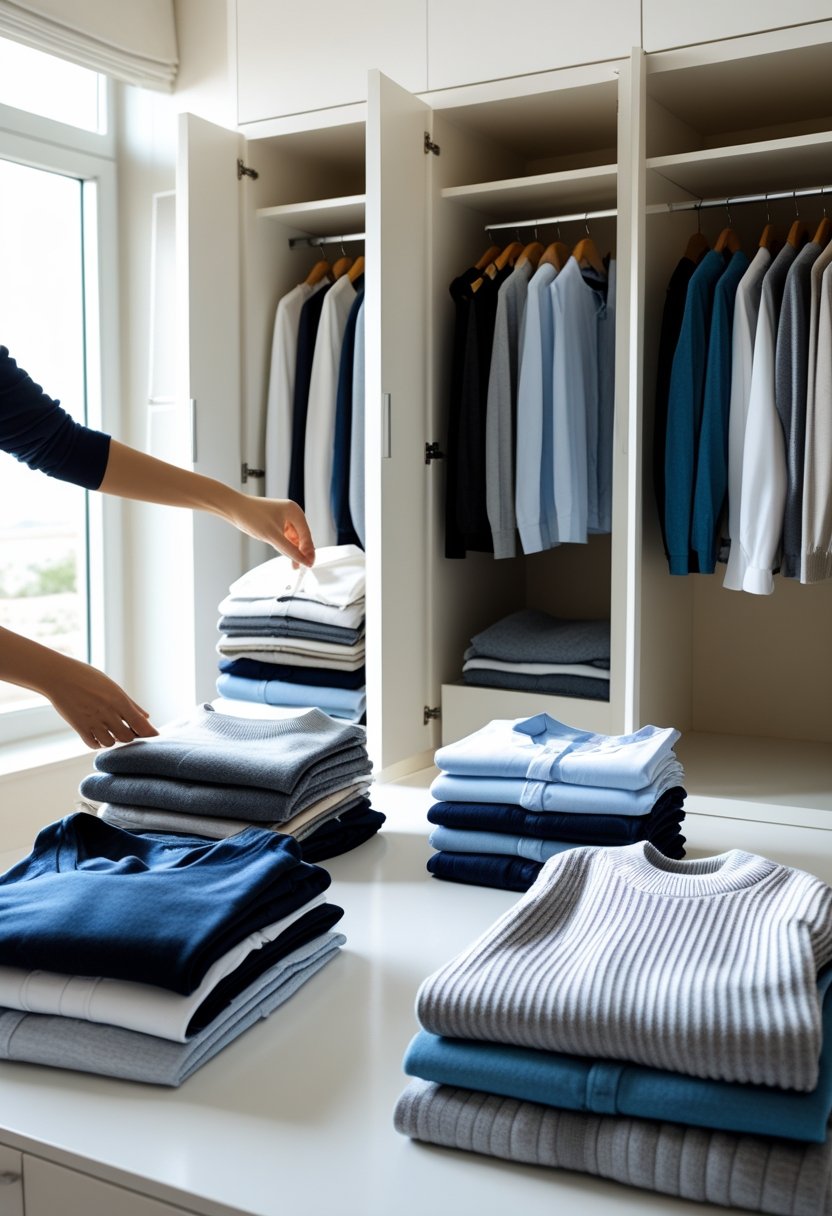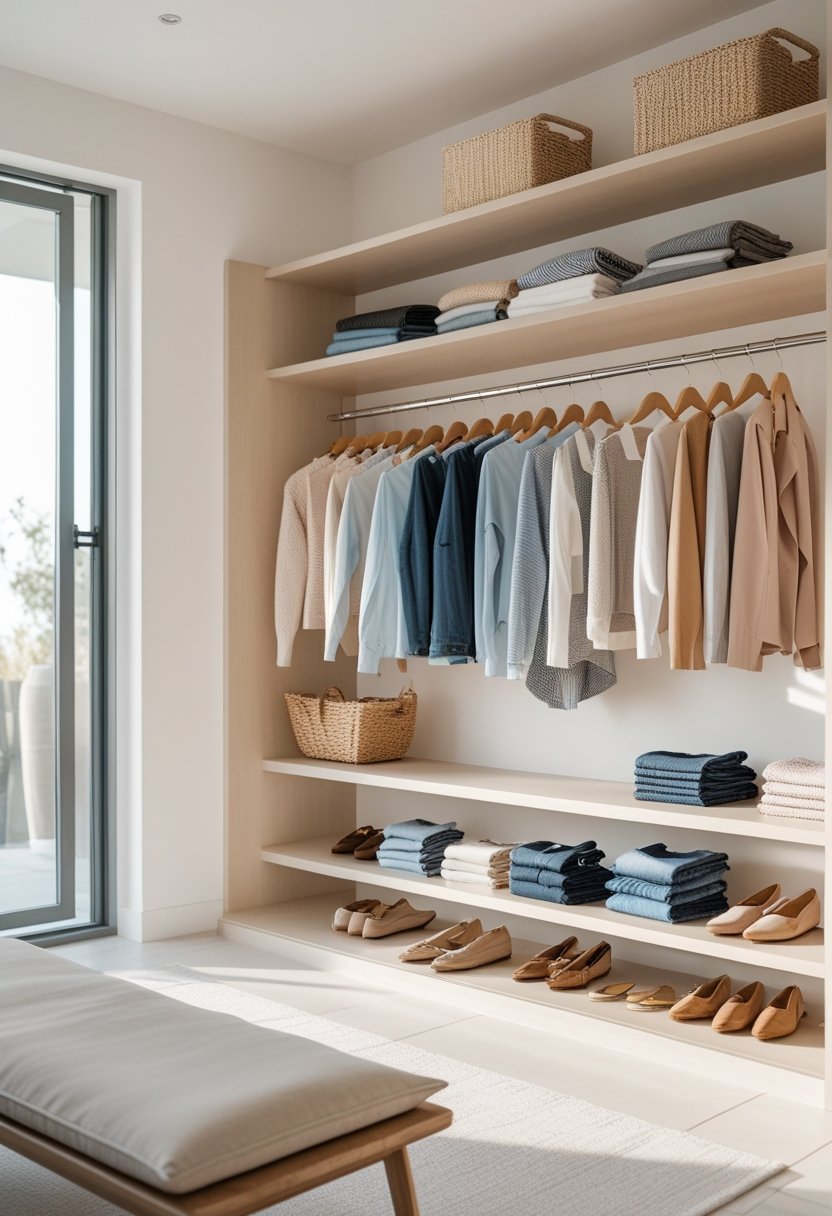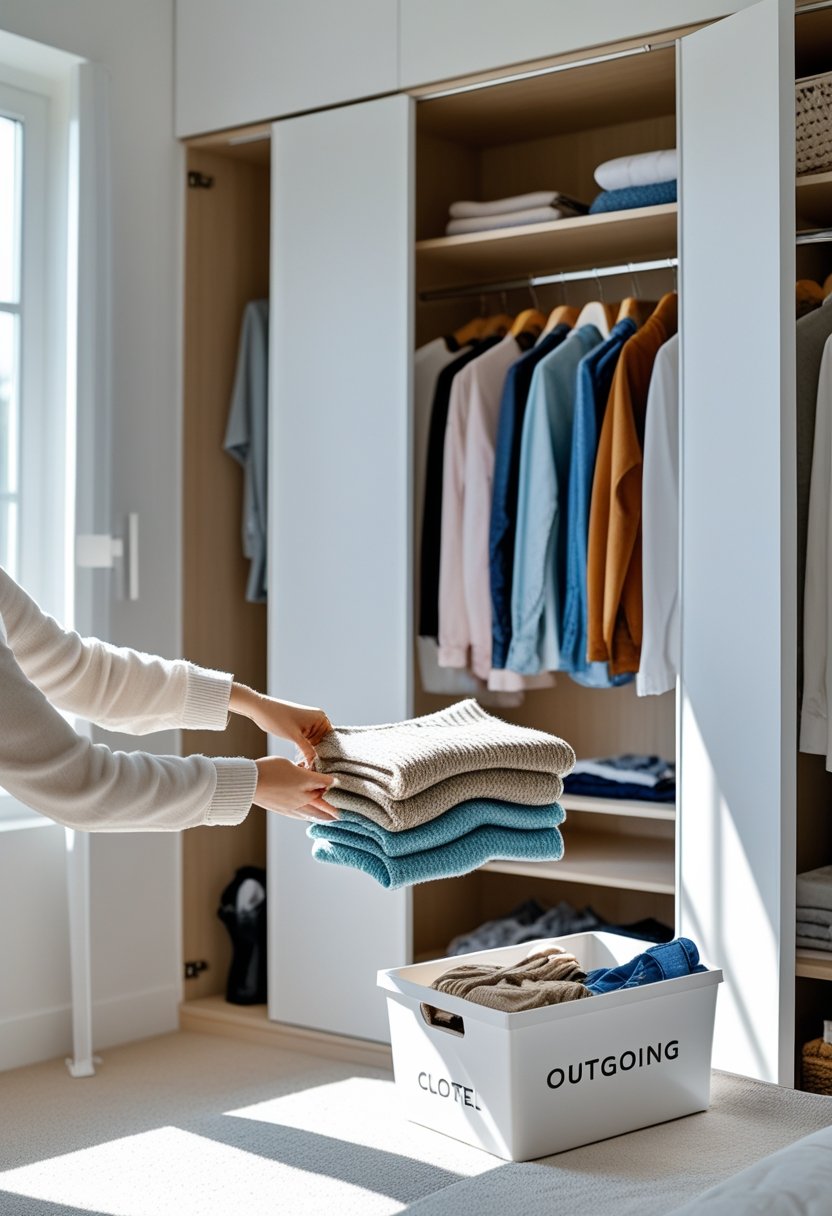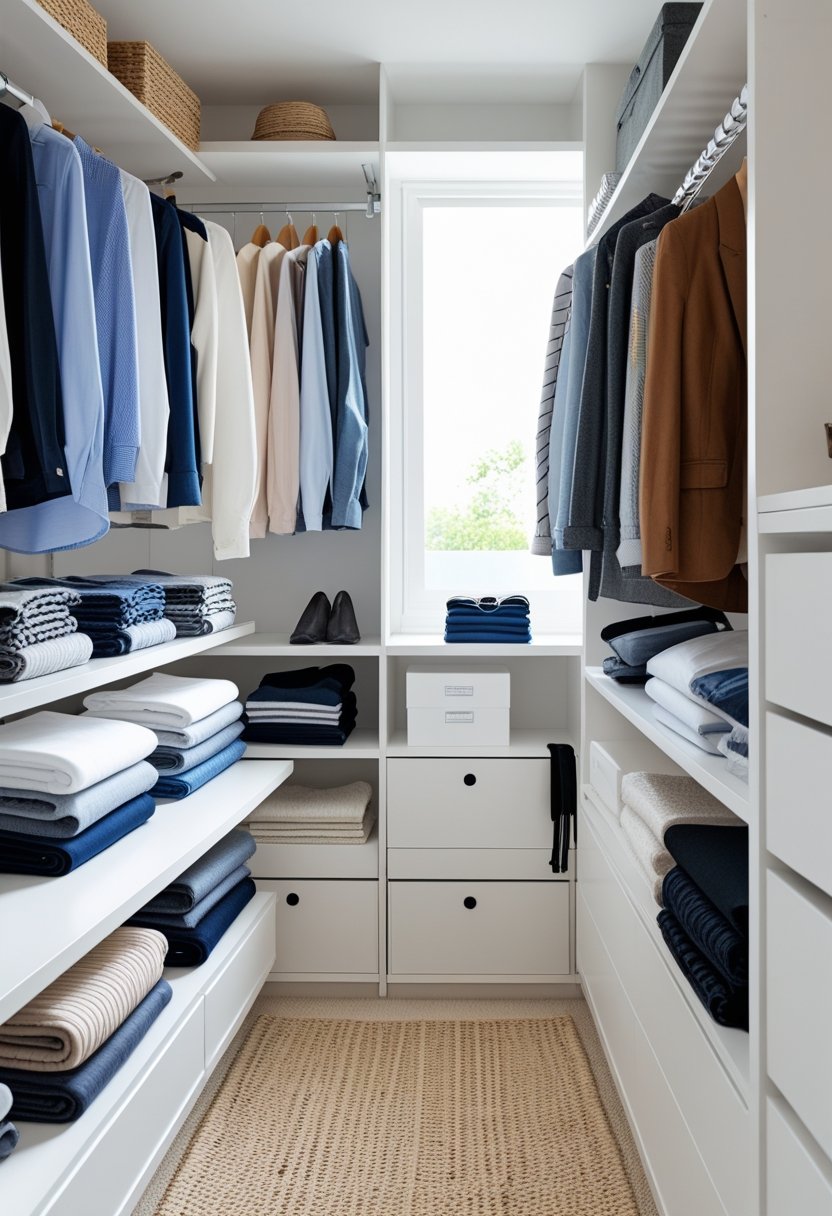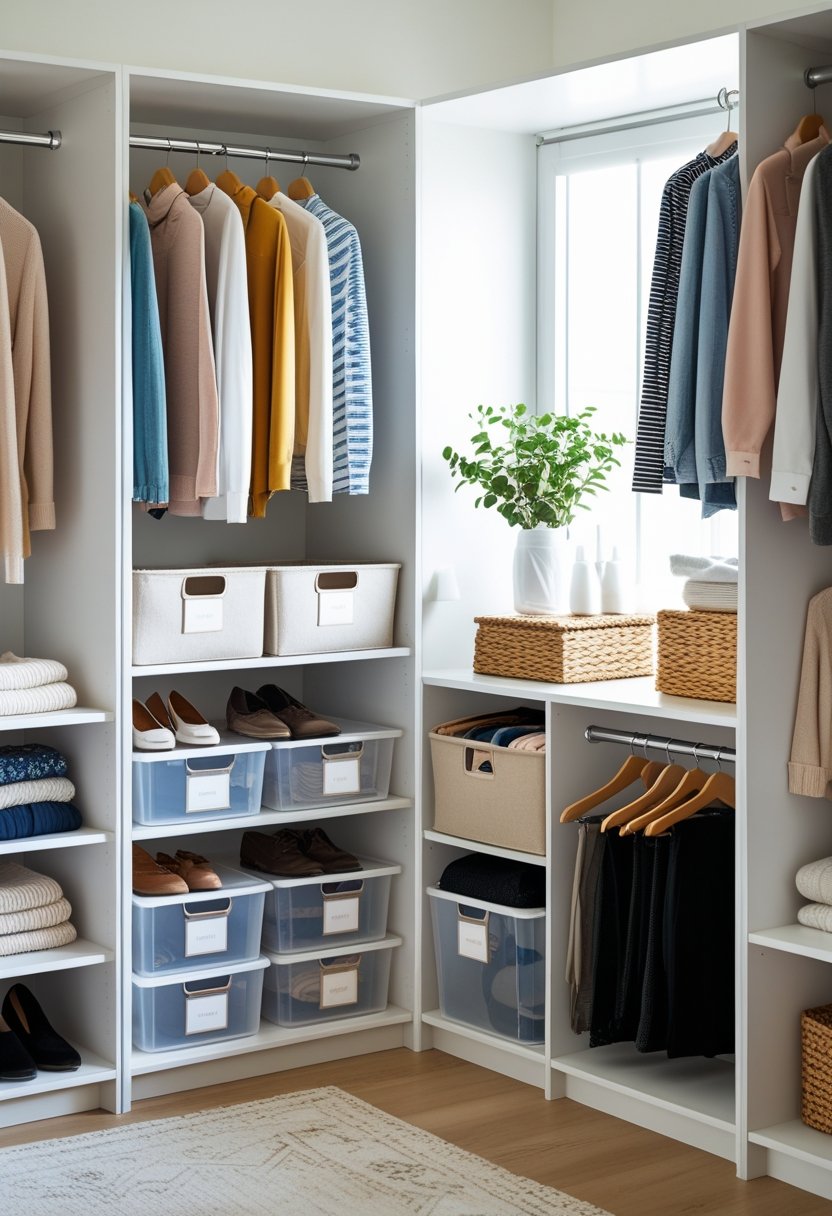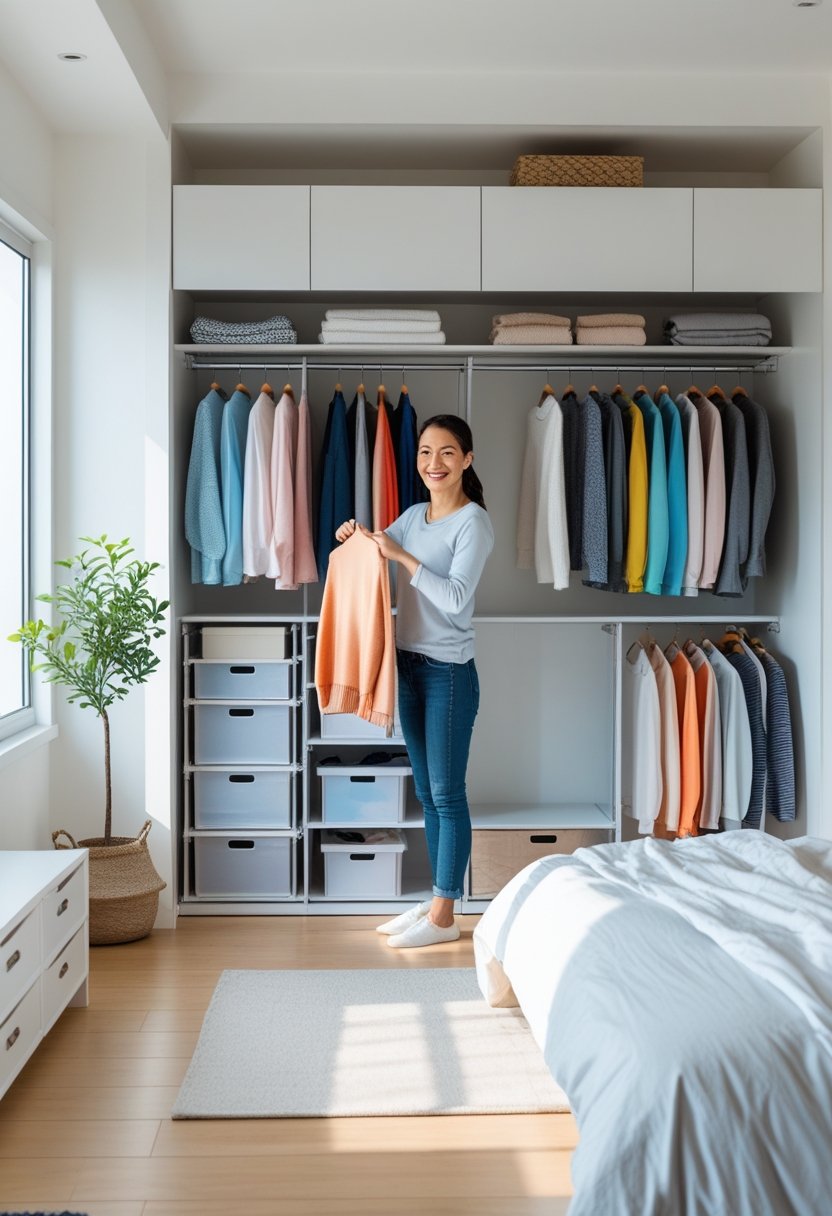Decluttering a wardrobe can feel overwhelming, but it doesn’t have to be. I’ve learned that breaking the process down into clear steps makes it manageable and even rewarding. Organizing your clothes not only creates space but can also simplify your daily routine.
The key to an effective wardrobe declutter is having a straightforward plan that guides you through each stage without stress. With the right approach, anyone can transform a cluttered closet into a functional and tidy space.
Schedule a specific time to start decluttering
I found that setting aside a dedicated time makes decluttering more manageable. Without a plan, it’s easy to procrastinate.
Choosing a weekend or a few evenings helps me stay focused and avoid distractions. I treat it like an important appointment.
Breaking the task into smaller sessions also works well. I often schedule just 15 to 30 minutes daily if my time is tight.
This approach keeps me consistent and prevents burnout. It also gives me a clear end point to celebrate.
By scheduling my decluttering, I turn a daunting task into an achievable routine. You can too.
For tips on scheduling, see this guide on how to declutter your wardrobe in one weekend.
Empty your wardrobe completely before sorting
I start by taking every item out of my wardrobe.
This helps me see exactly what I own without distractions.
An empty wardrobe also gives me a chance to clean the space.
When everything is out in the open, sorting becomes much easier.
I can quickly separate clothes into keep, donate, or discard piles.
Seeing all my clothes together reveals items I had forgotten about.
This step sets a clear foundation for the rest of the decluttering process.
Sort clothes into keep, donate, sell, and discard piles
I start by pulling every item from my wardrobe to see what I really have. Then, I sort clothes into four piles: keep, donate, sell, and discard.
I keep items that fit well and that I wear regularly. Clothes in good condition but no longer needed go into the donate or sell piles, depending on their value.
Worn-out, damaged, or stained clothes go straight into the discard pile. This method helps me make clear decisions and frees up space efficiently.
Sorting this way prevents clutter from creeping back and makes organizing the wardrobe easier afterward. I learned this approach is effective for long-term maintenance.
For more detailed guidance, see this ClothesLyne guide on decluttering.
Assess each item’s fit, condition, and last wear date
I start by trying on each piece to check its fit. Clothes that no longer fit well usually go.
Next, I inspect the item’s condition. Worn-out or damaged clothes get set aside for repair or donation.
I also consider the last time I wore each item. If it’s been over a year, I question its usefulness.
This process helps me keep only clothes that I wear regularly and feel comfortable in.
To stay organized, I make quick notes about items needing attention or potential removal.
This method prevents unnecessary clutter and supports a functional wardrobe.
For more detailed strategies, you can explore clothing decluttering tips from Be More with Less.
Use the ‘one-year rule’ to decide what to keep
I apply the one-year rule to my wardrobe to simplify decision-making. If I haven’t worn an item in the past year, it’s usually a good candidate for removal.
This rule helps me avoid holding onto clothes out of guilt or habit. It focuses on what I actually use and need, which creates more space.
Using the one-year rule also reduces decision fatigue. Instead of overthinking every piece, I have a clear guideline that makes decluttering easier and faster.
I find this approach practical and effective, especially when tackling a full closet at once. It encourages a minimalist mindset and keeps me organized.
For more details on how the rule works, check this explanation of the one-year rule for decluttering.
Group remaining clothes by category for easier organizing
Once I have sorted through my clothes, I group the remaining items by category. This helps me see what I actually have.
I usually divide them into broad groups like tops, bottoms, outerwear, and accessories. It keeps things simple and manageable.
Organizing by category allows me to quickly assess what pieces I wear often and which I don’t. It also makes putting clothes back easier.
Sorting into groups saves time during future decluttering sessions. It’s a method I rely on to keep my wardrobe orderly over time.
For a clear process, I follow advice similar to those found at furnifixes.com. It reinforces the value of working with categories.
Choose versatile pieces that mix and match well
I focus on selecting clothing that works together effortlessly. Versatile pieces let me create multiple outfits without extra items.
Neutral colors like black, white, and navy are my go-to. They blend easily with other colors and patterns in my wardrobe.
I include basics like well-fitting jeans, simple tops, and a classic jacket. These staples can be dressed up or down for different occasions.
Layering items, like a silk camisole or lightweight sweater, add flexibility. They help me adjust my outfit to changing weather or settings.
Choosing versatile pieces also means thinking about fabric and cut. I look for items that flatter my shape and feel comfortable all day.
This approach reduces clutter and saves time getting dressed every day. For more about mixing pieces, see this guide on capsule wardrobes.
Create a designated spot for outgoing clothes
I find it essential to have a specific place for clothes I plan to donate, sell, or discard.
This spot can be a bin, basket, or an empty drawer near my wardrobe. It keeps outgoing items separate and prevents them from mixing back in.
Having this dedicated area helps me stay organized and makes it easier to follow through with decluttering.
I remove items from my main closet immediately and place them there to avoid hesitation or second-guessing.
Keeping the spot visible reminds me to deal with the clothes promptly, whether by donating or recycling.
This simple habit improves my wardrobe maintenance and encourages ongoing decluttering.
Fold or hang clothes to maximize space
I choose whether to fold or hang based on the type of clothing and available space. Heavy fabrics like sweaters should be folded to avoid stretching.
Delicate items, dresses, and dress shirts work better hung to maintain their shape. I consider my closet and drawer space before deciding.
Folding clothes vertically in drawers helps me see everything clearly and saves space. This method prevents piles and makes grabbing items quicker.
Using sleeves folded along seams can keep shirts compact. I follow simple folding steps to maintain neat stacks and save drawer space.
Balancing hanging and folding depends on personal habits and fabric types, as noted by organizers. This helps me maintain an efficient wardrobe system.
For space-saving folding tips I often refer to, see these expert methods on how to fold clothes to save space.
Use storage solutions like bins and organizers
I find that using storage bins helps keep smaller items like scarves and belts neatly contained. It prevents clutter and makes everything easier to find.
Hanging organizers are useful for separating different clothing types, such as sweaters or accessories. They maximize vertical space and improve visibility.
Clear bins allow me to see what’s inside without opening them. This saves time and helps me maintain order.
Soft bins work well for bulky items like winter sweaters. They protect the fabric and keep things tidy.
I also use dividers in drawers to separate categories of clothing. This simple step adds structure and reduces mess.
Under-bed storage is another space-saving option I recommend. It’s perfect for seasonal clothes or items I don’t use often.
Smart storage solutions like these create a functional wardrobe, helping me stay organized with minimal effort.
For more ideas on effective storage, see clever closet organization hacks for small spaces.
Understanding the Benefits of Decluttering
Decluttering my wardrobe has helped me identify practical advantages beyond just a neater closet. It increases my daily efficiency, reduces decision fatigue, and maximizes the space I have available.
Mental and Emotional Advantages
When I clear out clothing I no longer wear, it reduces mental clutter. I feel less overwhelmed by choices when getting dressed, which lowers daily stress.
Having fewer items that I actually like and wear creates satisfaction and calm. It makes my wardrobe a positive, inspiring space rather than a source of frustration.
I also notice that decluttering helps me reflect on what my current lifestyle truly requires. This clarity affects other areas of my life, encouraging more intentional decisions.
Improved Closet Space Utilization
Removing excess items creates valuable physical space in my closet. This allows for better organization and easier access to my clothes.
I often group items by type or frequency of use, which helps me find what I need quickly. Using vertical space or storage solutions becomes more effective too.
With more space, I no longer have to cram clothes tightly. This reduces fabric wear and makes maintaining the closet simpler in the long run.
For practical tips on maximizing your wardrobe space, check out this wardrobe decluttering guide.
Strategies for Maintaining an Organized Wardrobe
Keeping a wardrobe organized requires consistent effort and practical routines. I rely on methods that adapt to seasonal changes and daily maintenance to ensure my closet stays clutter-free and easy to navigate.
Seasonal Wardrobe Rotations
Rotating my wardrobe by season is essential for maximizing space and accessibility. I store off-season clothes in clear bins or vacuum-sealed bags, placing them under the bed or in less-used areas like the attic. This frees up room for the current season’s items and reduces visual clutter.
I also inspect each item before storing it away, removing pieces I no longer wear or need. This step keeps my wardrobe lean and purposeful. When switching seasons, I bring back only what fits the weather and my style, keeping the transition smooth and efficient.
Daily Habits for Closet Upkeep
Every day, I spend a few minutes returning clothes to their designated spots immediately after use. This quick practice prevents buildup of clutter and simplifies outfit choices. I avoid piling clothes on furniture or floors by having separate baskets for clean and worn items needing washing.
I also follow a “one in, one out” rule: for every new piece I buy, I let go of an old one. Regularly reviewing my wardrobe monthly helps me catch anything unnecessary before it accumulates. These habits maintain an orderly closet without requiring long, disruptive cleanouts.
For more on seasonal storage, see 10 Simple Steps for Organizing Your Wardrobe Like a Pro.

Hi, Ehtesham Here, I like to upload content about fashion and scents, and I love sharing ideas. My goal is to help others in finding outfits and Scents.


